I have been drinking plenty of bad tea lately. As has become my recent custom, I now seek redemption by way of the excellent samples kindly provided by Elven, my craftworld-travelling teachum from Singapore.
The first of two cathartic experiences is a 2006 "Jingmaishan Gushu" [ancient tree], brought by Elven's DNA-bearing replicate in "a random teashop in Shenzhen".
Jingmaishan is north of the usual pu'ercha areas, being found in Lancang county (zizhizian, fact fans) in Simao diqu. It is also rather a well-explored place, which tea-makers like to visit because of its well-established tradition of produced accessible, sweet "lanxiang" [orchid-scent] teas.
I don't usually like Jingmaishan tea. There is something just a bit "off" with it, according to my tastes. I don't quite enjoy all of that ever-so-slightly-nutty sweetness.
This tea reminded me of my long-time dislike of the paintings of Van Gogh. I strongly disliked his work - until I visited the Van Gogh museum in Amsterdam. Coming face-to-canvas with his work just overwhelmed my opinion, and suddenly I came to appreciate that which I had previously disliked.
Similarly, I used to completely dislike the Impressionism of Monet. I simply could not understand how quite so many people could appreciate his sludgy messes. Then, I accompanied a girlfriend of the time to Cardiff, and spent the morning in the Welsh National Gallery. There hung one of Monet's (very many) paintings of Rouen Cathedral. Suddenly, something "clicked", and I found that I could no longer dislike his work.
In both cases, Van Gogh and Monet, the exposure to the sheer quality of the work destroyed my prejudice. I was forced to change my mind, when confronted by the works themselves. It was an undeniable and profound experience in both cases. To this day, I look upon the works of both artists with a new-found respect and appreciation that came from enjoying their artwork first-hand.
This tea reminded me of my long-time dislike of the paintings of Van Gogh. I strongly disliked his work - until I visited the Van Gogh museum in Amsterdam. Coming face-to-canvas with his work just overwhelmed my opinion, and suddenly I came to appreciate that which I had previously disliked.
Similarly, I used to completely dislike the Impressionism of Monet. I simply could not understand how quite so many people could appreciate his sludgy messes. Then, I accompanied a girlfriend of the time to Cardiff, and spent the morning in the Welsh National Gallery. There hung one of Monet's (very many) paintings of Rouen Cathedral. Suddenly, something "clicked", and I found that I could no longer dislike his work.
In both cases, Van Gogh and Monet, the exposure to the sheer quality of the work destroyed my prejudice. I was forced to change my mind, when confronted by the works themselves. It was an undeniable and profound experience in both cases. To this day, I look upon the works of both artists with a new-found respect and appreciation that came from enjoying their artwork first-hand.
This Jingmaishan tea is very similar. While I suspect that it will not convert me into being a lover of Jingmaishan teas, it has demonstrated that tea from this region can be excellent.
Perhaps that is all that I wished to write about this tea. Its random nature suggests that we will be able neither to trace its true identity nor to buy any more of it, and so its effect on my mind will remain one of sweet conversion to a region of which I thought little in the past.
As if a good day could get no better, the sister of my dear wife then cooked us huoguo [hot pot] for lunch.
As if a good day could get no better, the sister of my dear wife then cooked us huoguo [hot pot] for lunch.
Later in the week, I encountered a mysteriously-labelled sample:
"Ho ho!" thought I, as opening the rustic paper of the outer wrapper revealed that this was, in fact, the 2007 "Lanyin" [blue-label] cake from the Wisteria Teahouse of Taiwan.
This cake is attributed to the Menghai region; the leaves are small and fragmented, with the colouring consonant with their six years of age.
Looking at the sheer solidity of the orange soup in the photograph below instantly brings to mind the charms of this rather special tea.
It is as intensely, and bizarrely, fragrant as the 2003 Zipinhao. Heaven knows how such a unique quality comes about. Its soup, as shown so accurately below, is a heavy orange that tends towards red as the air acts upon it. My mouth waters at the aroma alone.
It is as intensely, and bizarrely, fragrant as the 2003 Zipinhao. Heaven knows how such a unique quality comes about. Its soup, as shown so accurately below, is a heavy orange that tends towards red as the air acts upon it. My mouth waters at the aroma alone.
There is the dense pine of clean aging, not unlike that which is imparted by storage here in my home city. The body is challenging, and highly shengjin [mouth-watering]. It is a rare opportunity and a treat: the tongue vibrates, the throat resonates with sweetness, even while I spend minutes waiting for the tetsubin to boil water for the next infusion.
With thanks to Elven for both of these samples, I hope very much that you come across something similar to each, Gentle Reader, for they are remarkable indeed and will be remembered.

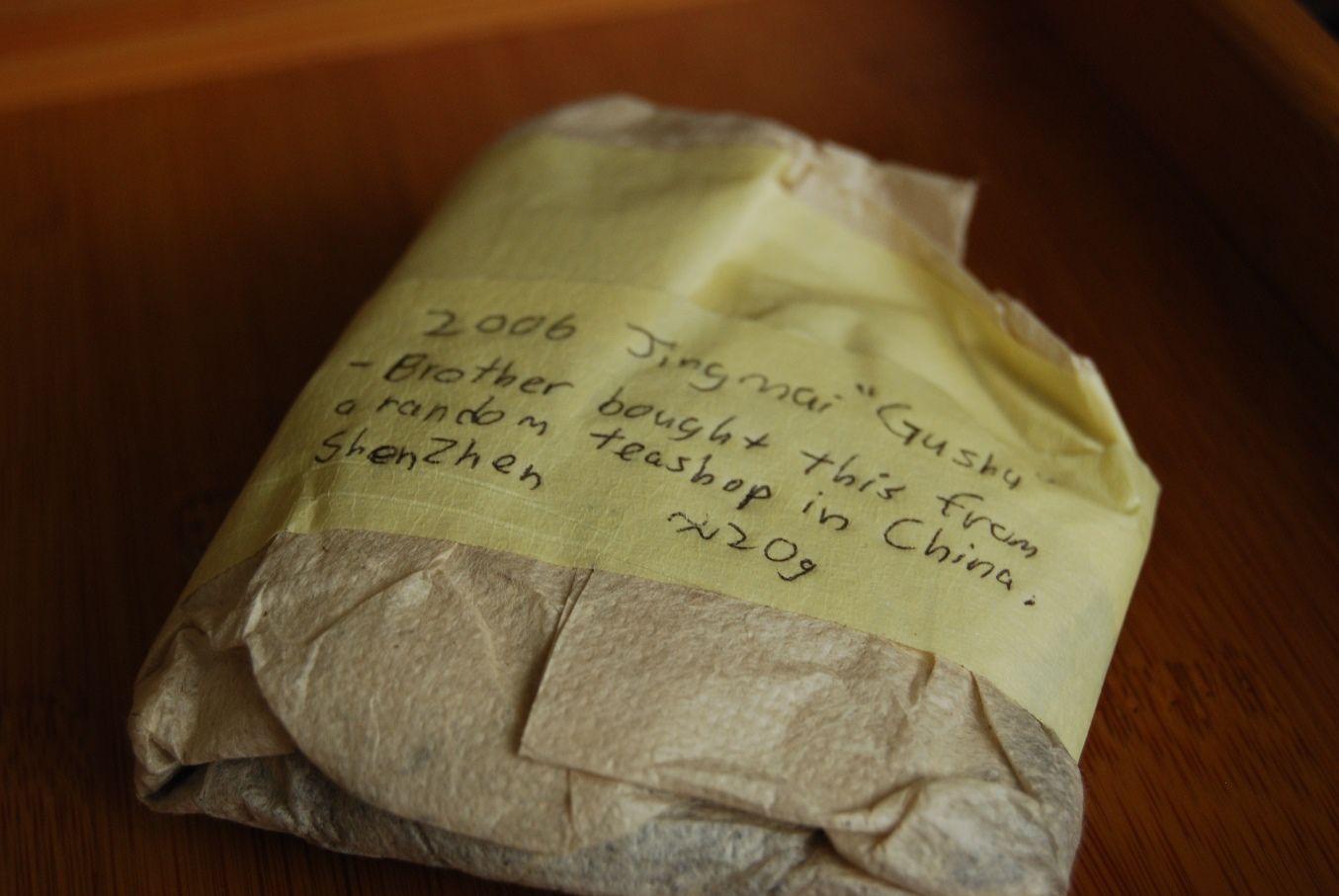
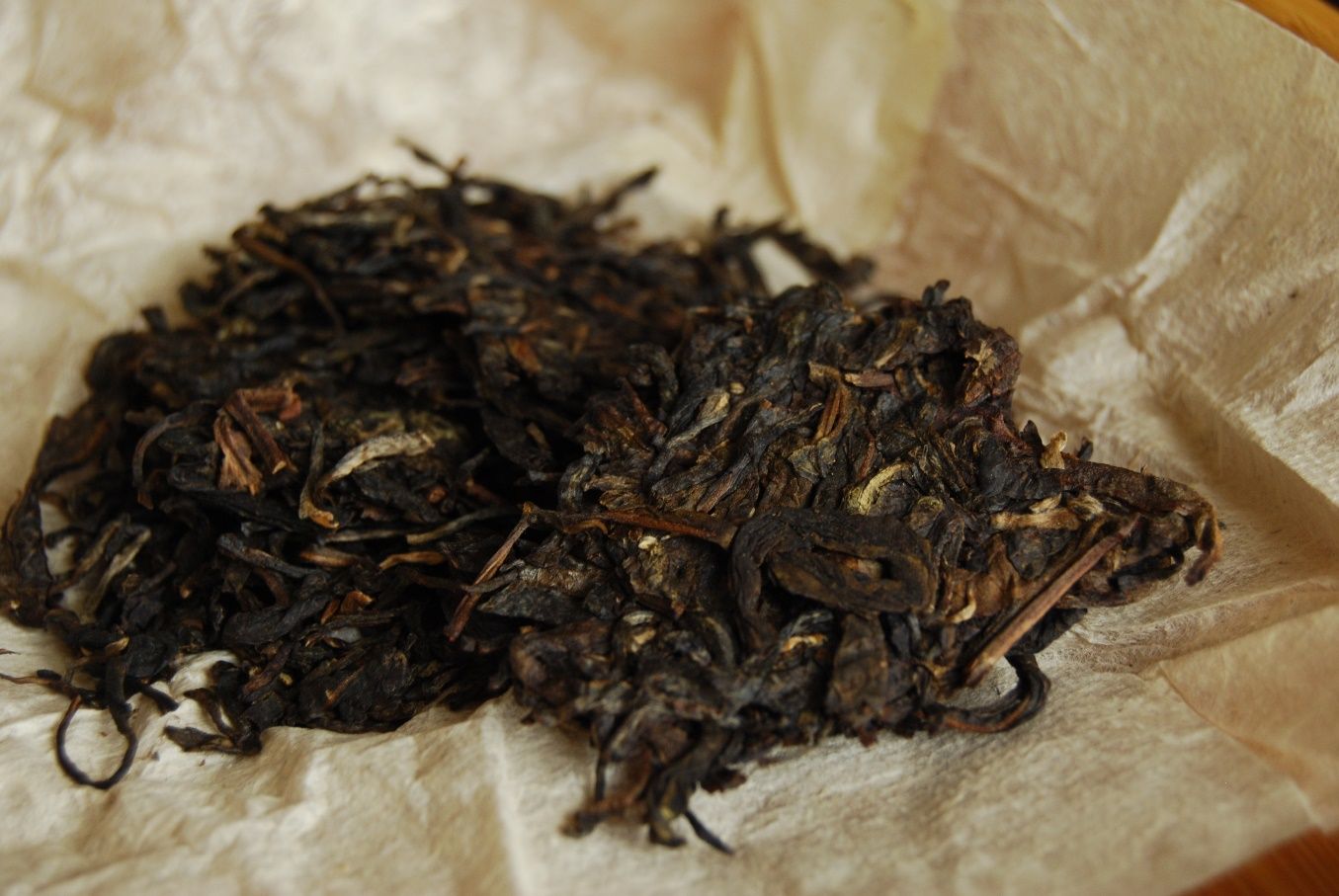
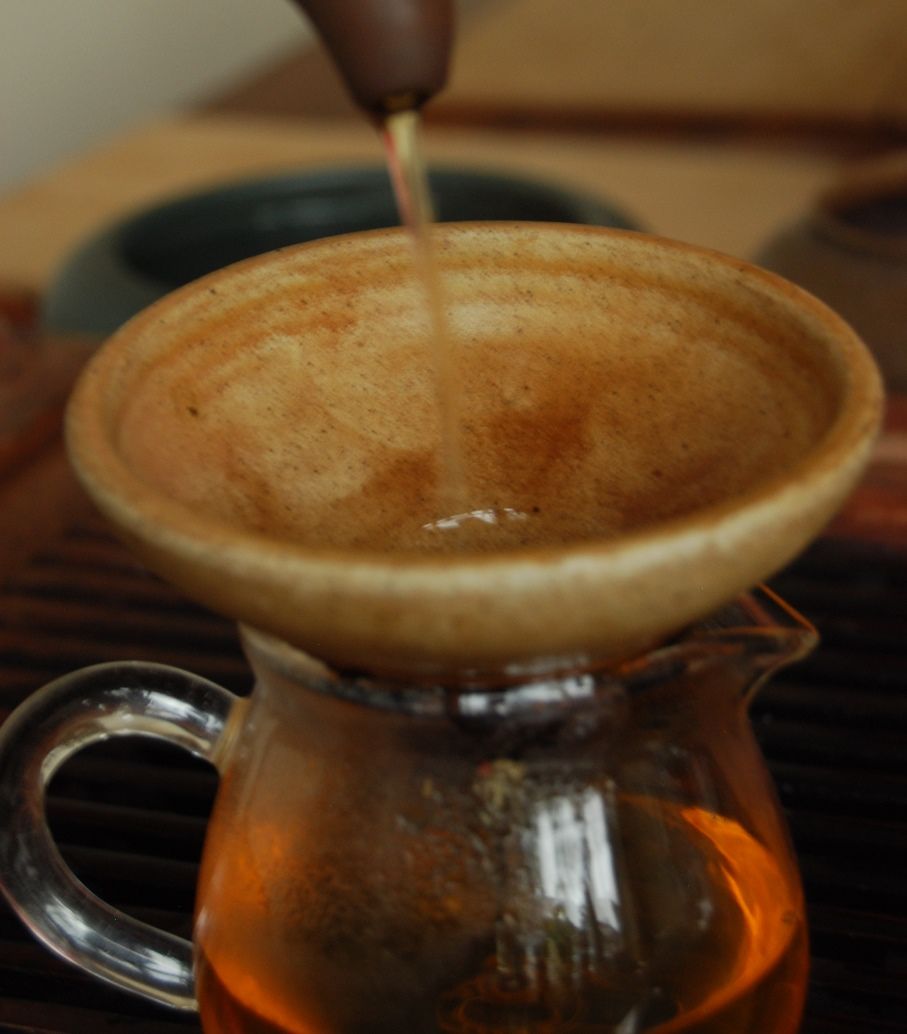
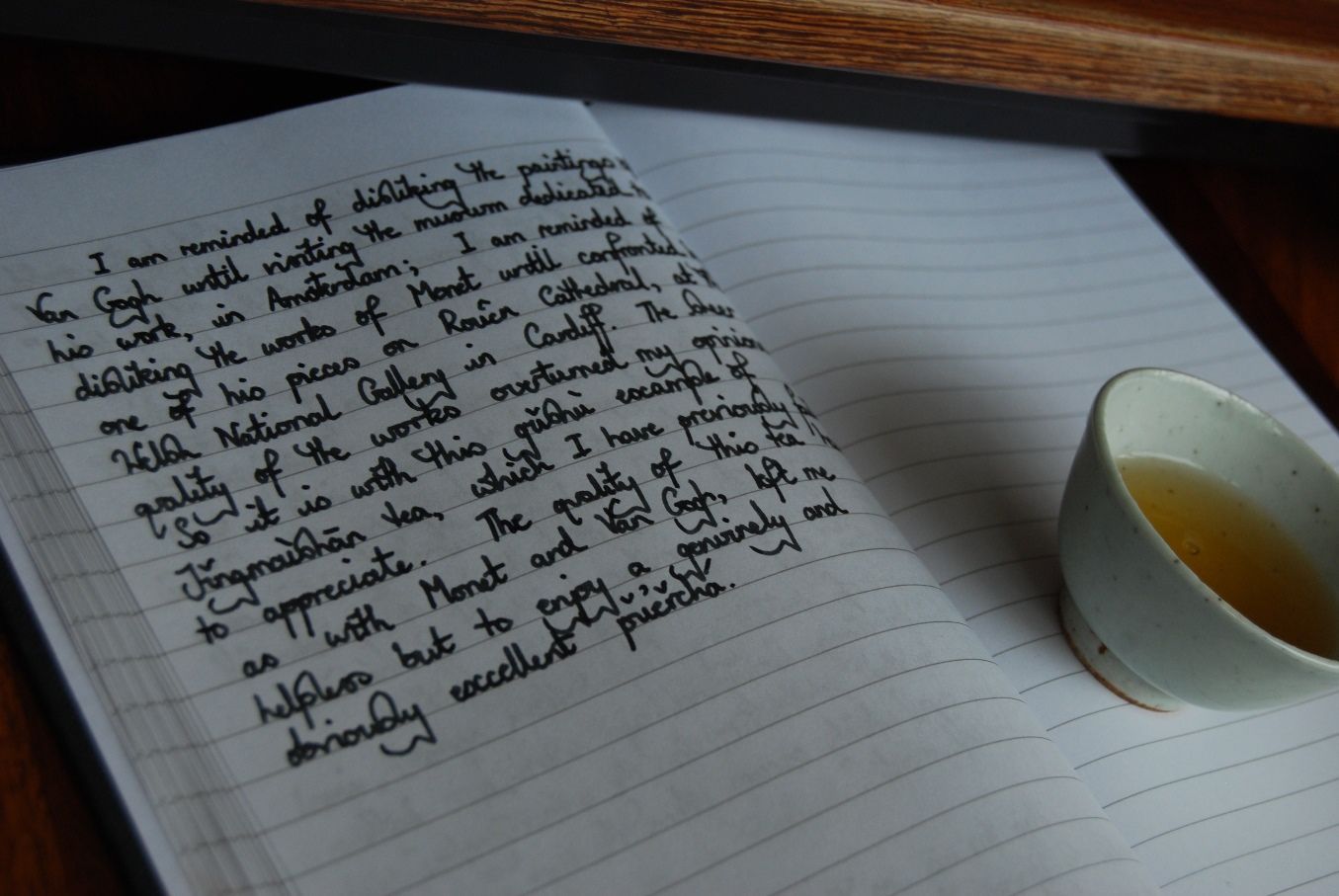


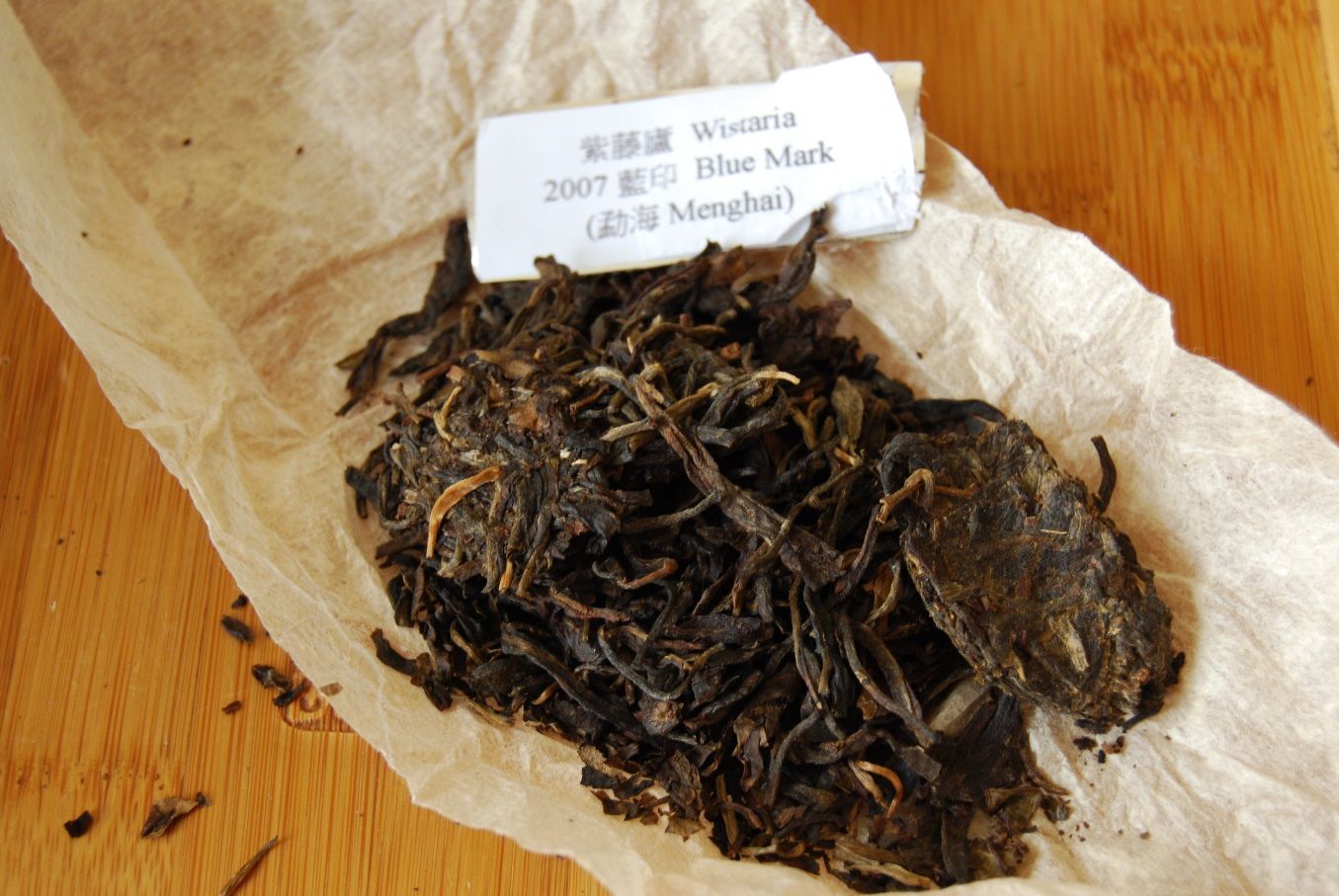
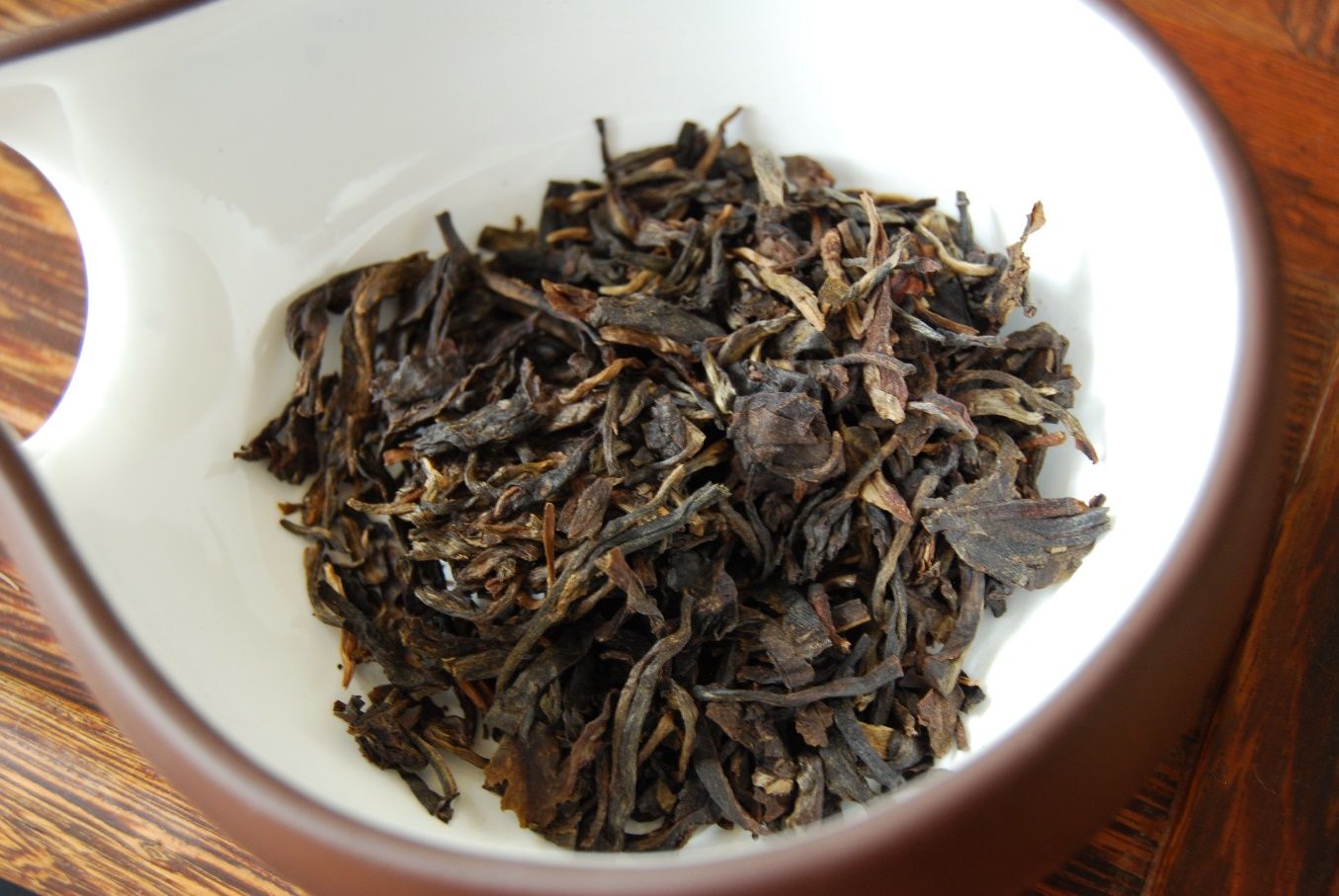
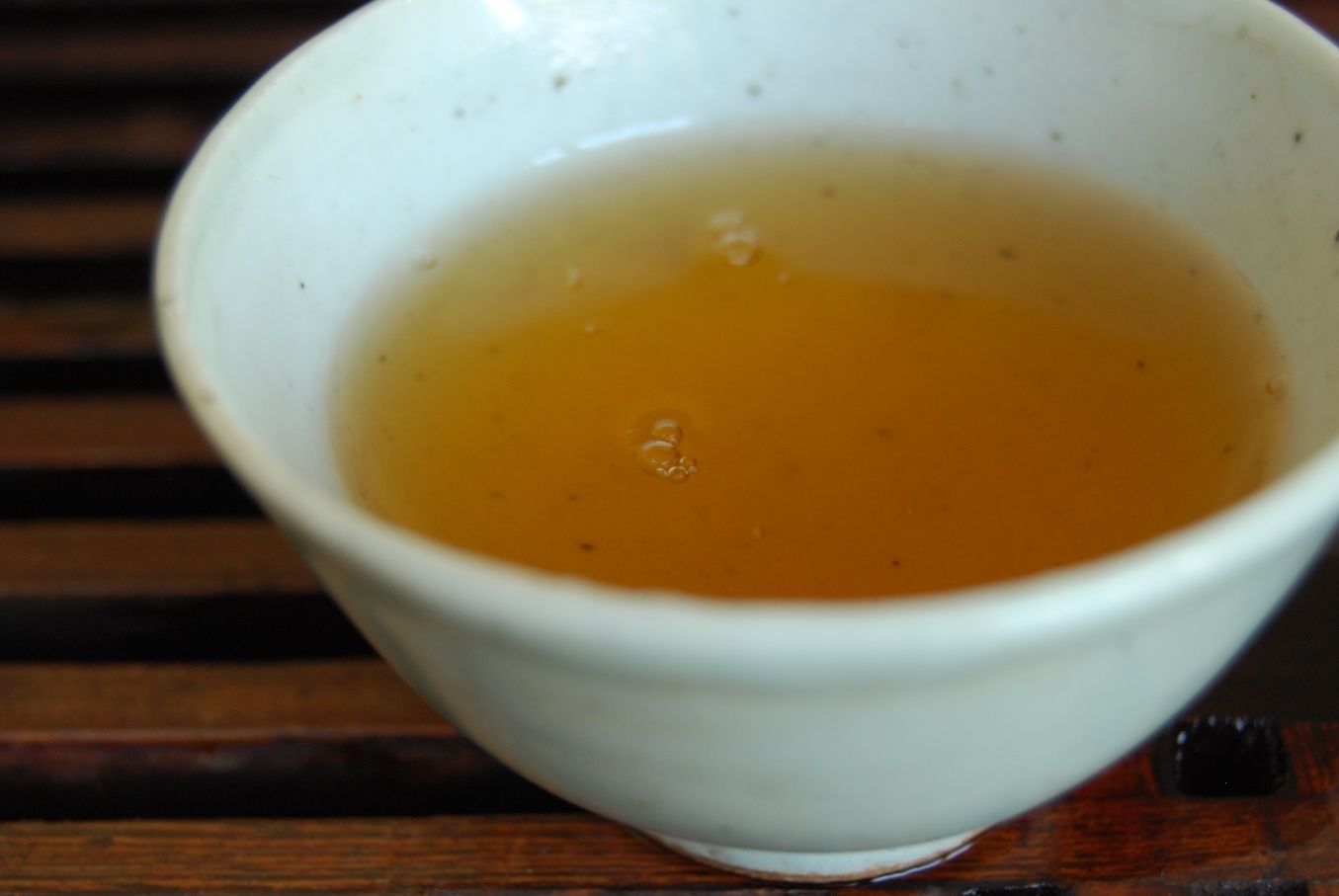
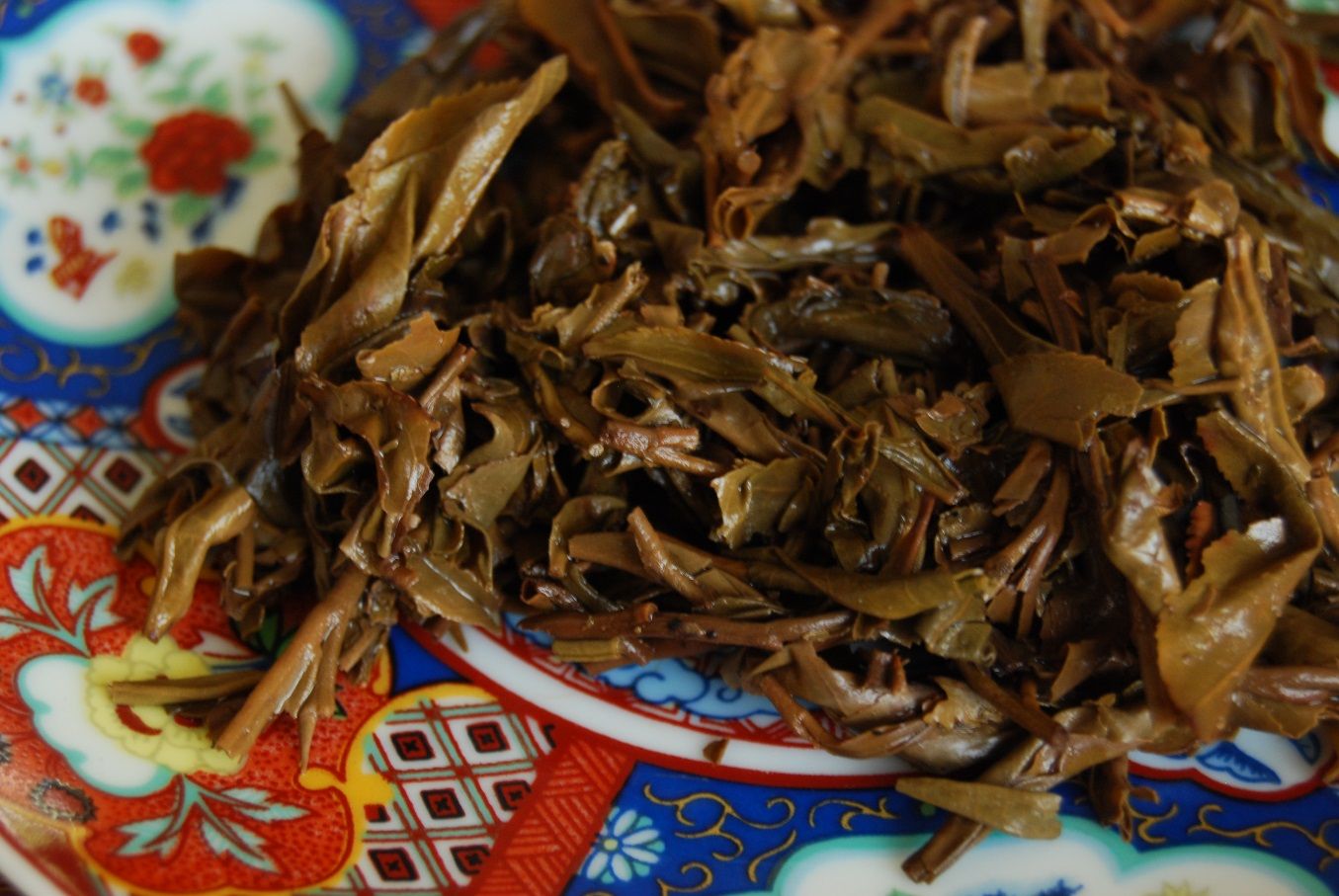
I'm curious what you'd think of: http://yunnansourcing.com/en/otherfactories/1807-2003-chang-bao-jing-mai-shan-pu-er-bing-raw-pu-erh-tea-cake.html
ReplyDeleteI bought one about 6 months ago and have been enjoying it. It has less of that Jingmai nuttiness you're referring to, maybe because it's been relatively/partially wet stored.
I actually prefer it to: http://yunnansourcing.com/en/rawpu-erh/392-2003jingmairoundcaketailianteafactory357g.html
Thanks very much, Nick - I'll see if I can get some :)
ReplyDeleteToodlepip,
Hobbes